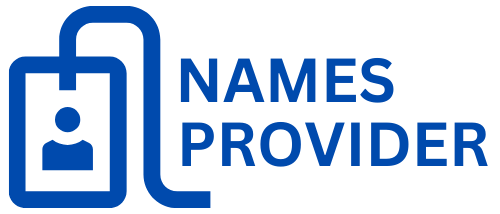Your cold email just landed in someone’s inbox alongside fourteen other messages from strangers. That’s right, consumers reported receiving an average of 15 cold emails per week from senders they had not had prior communication with.
This isn’t just inbox clutter; it’s a battleground where your message competes for attention against overwhelming odds. Most people delete these emails without reading them, but there’s a way to break through.
The secret isn’t sending more emails, it’s sending better ones. When you master the art of crafting compelling cold emails, you’ll transform silent inboxes into active conversations that drive real business results.
Understanding What Makes Cold Emails Work
Cold emails succeed when they feel personal and valuable rather than generic and pushy. The difference between effective outreach and spam lies in your approach to connecting with recipients.
The Psychology Behind Cold Email Success
People respond to messages that demonstrate genuine interest in their world. When someone receives an email that mentions their recent work, industry challenges, or company news, they’re more likely to engage. This isn’t about manipulation – it’s about showing respect for their time and expertise.
Modern cold email software solutions make personalization easier than ever. Advanced tools help you track recipient behavior, customize messages at scale, and manage follow-up sequences automatically. With the right cold email software, you can leverage cutting-edge personalization features to transform your outreach campaigns—connecting with prospects in a way that feels authentic, timely, and results-driven.
Common Mistakes That Kill Response Rates
Most cold emails fail because they focus on the sender’s needs rather than the recipient’s interests. Generic subject lines like “Quick Question” or “Following Up” signal immediately that you’re sending mass messages. Similarly, opening with company information or product features shows you haven’t done your homework.
Another major mistake is asking for too much too soon. Requesting a 30-minute meeting from a stranger creates unnecessary friction. Instead, aim for smaller commitments that feel manageable.
Essential Cold Email Tips for Better Results
Successful cold emailing requires a strategic approach that balances personalization with efficiency. These proven techniques will help you craft messages that recipients actually want to read.
Research Your Prospects Thoroughly
Before writing effective cold emails, invest time in understanding your recipient’s background, recent activities, and potential pain points. Check their LinkedIn profile, company news, and recent social media posts. This research becomes the foundation for genuine personalization.
Look for specific triggers like job changes, company announcements, or industry awards. These events provide natural conversation starters that feel timely and relevant rather than random.
Craft Compelling Subject Lines
Your subject line determines whether someone opens your email or deletes it immediately. Effective subject lines create curiosity while hinting at specific value for the recipient. Avoid generic phrases and instead reference something specific about their work or company.
Consider using formats like “Thoughts on [specific company initiative]” or “Quick idea for [department/team].” These approaches show you’ve done research while promising relevant insights.
Perfect Your Opening Hook
The first few sentences of your email make or break the entire message. Start with something that proves you know who they are and why you’re reaching out specifically to them. This could be a genuine compliment about their work, a reference to a recent company milestone, or a thoughtful question about their industry.
Avoid introducing yourself or your company in the opening. Instead, focus entirely on the recipient and establish why this conversation matters to them.
Cold Email Strategies That Drive Responses
Different situations require different approaches, but certain strategies consistently produce better results across industries and target audiences.
The Value-First Approach
The most effective cold email strategies lead with value rather than requests. Share a relevant insight, useful resource, or helpful connection before asking for anything in return. This approach builds goodwill and demonstrates your expertise.
For example, if you’re reaching out to marketing professionals, you might share a case study relevant to their industry or offer insights about a tool they’re using. This positions you as a helpful resource rather than just another salesperson.
Follow-Up Sequences That Work
Most cold email conversations begin with follow-up messages, not initial outreach. Plan a series of 3-4 follow-ups spaced several days apart, each adding new value or perspective. Don’t simply repeat your original message – bring fresh insights or different angles to the conversation.
Your follow-ups should feel like natural conversation continuations rather than automated reminders. Reference your previous message briefly, then provide new information that advances the discussion.
Timing and Frequency Optimization
Send your emails during standard business hours when recipients are most likely to be checking their inboxes actively. Tuesday through Thursday typically perform better than Mondays or Fridays. However, test different send times to find what works best for your specific audience.
Cold Email Examples That Convert
Learning from successful examples helps you understand what resonates with recipients and drives responses.
The Industry Expert Approach
“Hi Sarah, I noticed your presentation at the Marketing Summit last month generated quite a buzz on LinkedIn. Your point about customer retention metrics particularly resonated with me. I’ve been working with similar companies in the healthcare space and discovered a strategy that might interest you. Would you be open to a brief conversation about this approach?”
This example works because it references specific, recent activity and offers relevant expertise without being pushy.
The Mutual Connection Strategy
“Hello David, Jessica Martinez mentioned you’re exploring new analytics tools for your team. I’ve helped several companies in your industry implement similar solutions and learned some valuable lessons along the way. Would you be interested in hearing about a common pitfall most teams encounter during this process?”
This approach leverages social proof while offering immediate value through shared experience.
The Problem-Solution Format
“Hi Michael, I saw your recent post about the challenges of scaling content production. Many companies your size face similar bottlenecks when trying to maintain quality while increasing output. I’ve worked with three similar organizations to solve this exact problem. Would you be interested in hearing how they approached it?”
This format acknowledges a specific pain point and promises relevant solutions without being overly promotional.
How to Get Replies to Cold Emails: Advanced Techniques
Moving beyond basic strategies, these advanced techniques can significantly improve your response rates.
Personalization at Scale
| Traditional Approach | Advanced Personalization |
| Generic company mentions | Specific recent achievements |
| Industry-wide pain points | Role-specific challenges |
| Basic demographic data | Behavioral insights |
| Standard templates | Dynamic content blocks |
| Mass sending | Micro-targeted segments |
Social Proof Integration
Include relevant case studies, testimonials, or success stories that match your recipient’s situation. Don’t just mention that you’ve helped other companies – be specific about the results and how they apply to your prospect’s context.
The Soft Ask Strategy
Instead of requesting meetings or calls, ask for opinions or feedback. People are more likely to respond to “What do you think about this approach?” than “Can we schedule a 15-minute call?” This reduces friction while opening the door for deeper conversation.
Questions like “Does this align with your experience?” or “Am I thinking about this correctly?” feel collaborative rather than transactional.
FAQs
What is the 30/30/50 rule for cold emails?
The 30/30/50 rule for cold emails suggests spending 30% of your effort on crafting personalized subject lines, 30% on optimizing email deliverability, and 50% on follow-ups to enhance cold email response rates.
How to write a really good cold email?
Tailor the message to the recipient through thorough research, validate yourself with relevant credentials, alleviate their pain points, keep it short and actionable, show appreciation and vulnerability, and avoid generic templates completely.
What’s the ideal length for a cold email?
Keep cold emails between 50-125 words. This length provides enough space for personalization and value while respecting the recipient’s time and maintaining their attention throughout the message.
Turning Cold Contacts Into Warm Conversations
Cold emailing isn’t about sending more messages – it’s about sending better ones. When you combine thorough research with genuine personalization and value-focused messaging, you’ll transform your outreach from an annoying interruption into a welcome conversation starter.
The key lies in remembering that there’s a real person behind every email address, someone who’s probably tired of generic pitches but hungry for genuine connection and relevant insights. Master these techniques, and you’ll find that cold emails become one of your most powerful tools for building meaningful business relationships.




